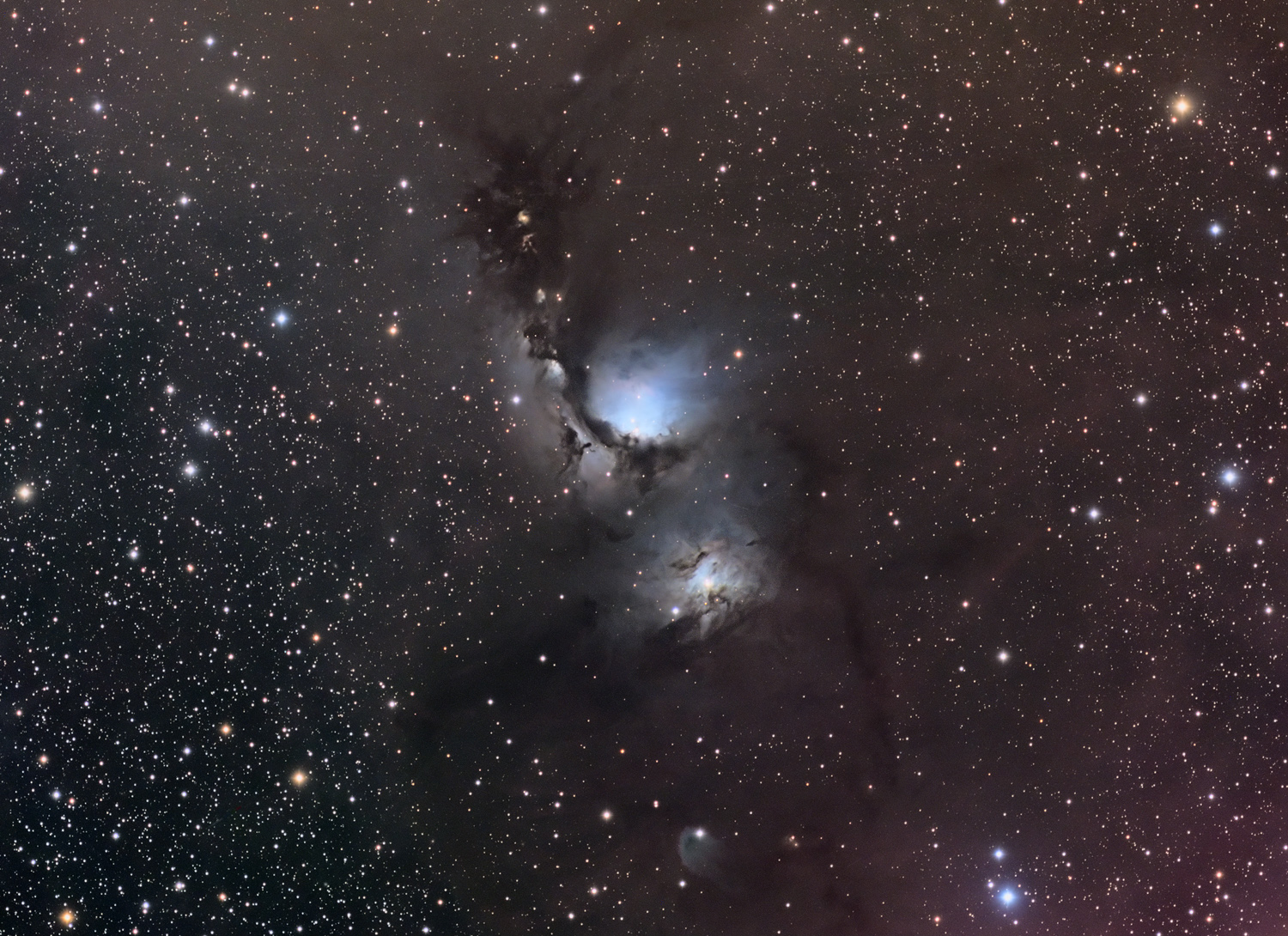 |
M78 -
Reflection Nebula in Orion
 |
Copyright 2011 Hap Griffin
M78 is considered the brightest reflection nebula in our sky. The complex
is actually part of a much larger cloud of interstellar gas and dust known as
the Orion B molecular cloud. M78 is the large bluish area in the
middle with the lower part known as NGC 2071. AT the top of the image is a
large column of dark dust with several bright outpourings of radiation,
indicating the formation of stars within. The topmost small bright patch
in this area is McNeal's Nebula, only recently discovered in 2004 indicating
that it is a very young formation. Visible changes in nebulae over a human
lifetime are rare.
M78 lies on the edge of what is known as Bernard's Loop, a huge loop of glowing
red interstellar hydrogen almost surrounding the constellation of Orion.
M78 lies at a distance of approximately 1300 light-years.
Date/Location:
January 3 and 8, 2011 Griffin/Hunter
Observatory Bethune, SC
Camera: QSI 583wsg
Filters: Astrodon E Series Generation 2 LRGB
CCD Temperature: -20 C
Instrument: Takahashi FSQ-106N
Focal Ratio: f/5
Mount: AP-1200
Guiding: Auto via the QSI camera's built in Off-Axis Guider
mirror and an SBIG ST-402 Guider
Conditions: Clear and cold
Weather: 30 F to 14F, still (breezy second night)
Exposure: 390 minutes total (27 x 10 min Luminance binned 1x1, 8 x 5 min each
RGB binned 2x2)
Capture: CCDAutopilot 4 w/ Maxim DL Camera Control, focused automatically w/
FocusMax
Processing: Frame calibrations and stacking with ImagesPlus v3.75,
alignment in Registar 1.0, LRGB compositing and finishing in Photoshop CS5.